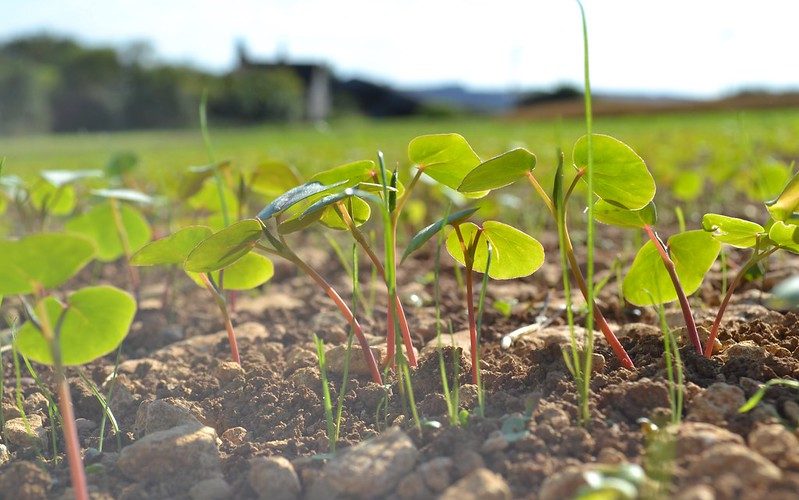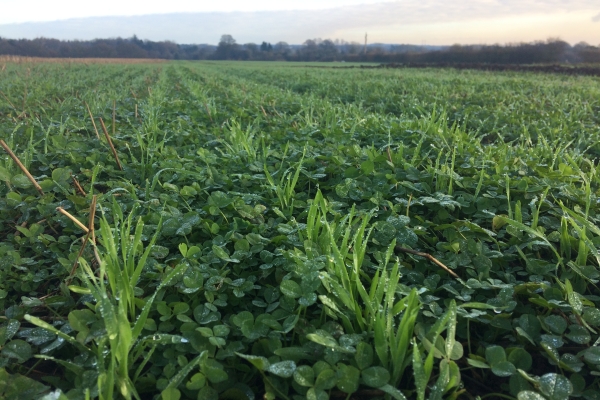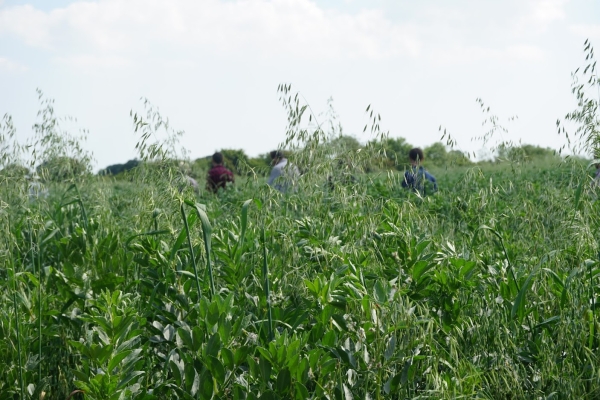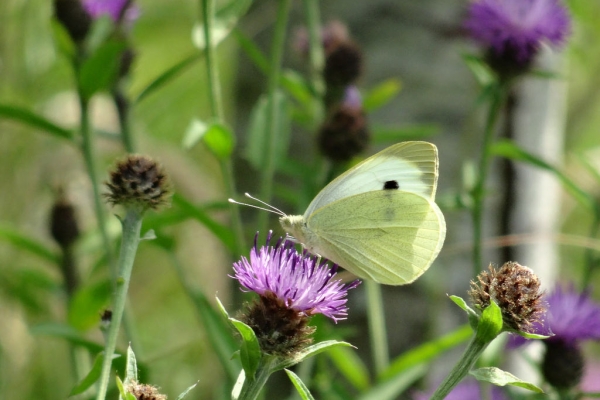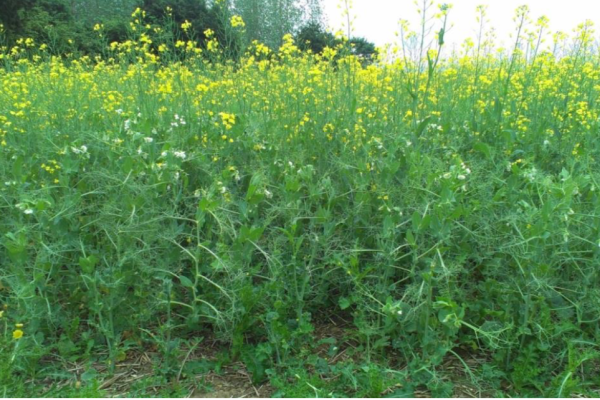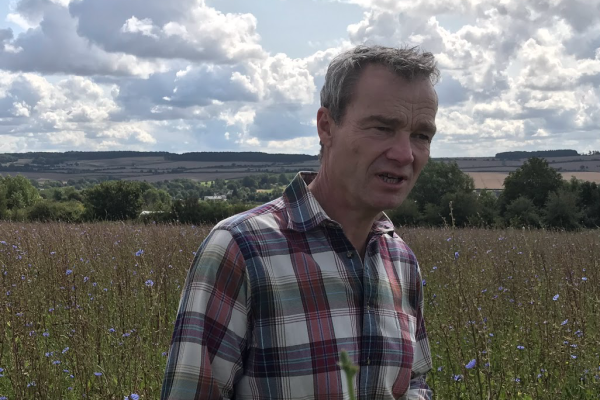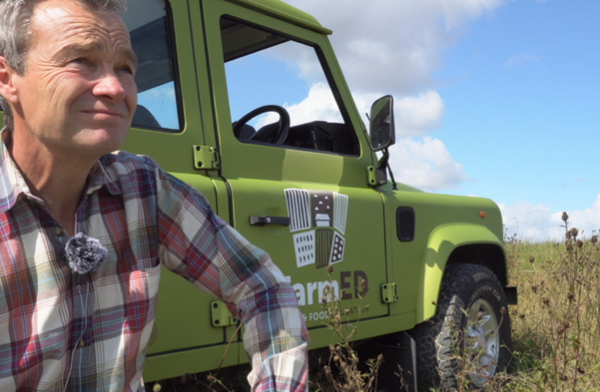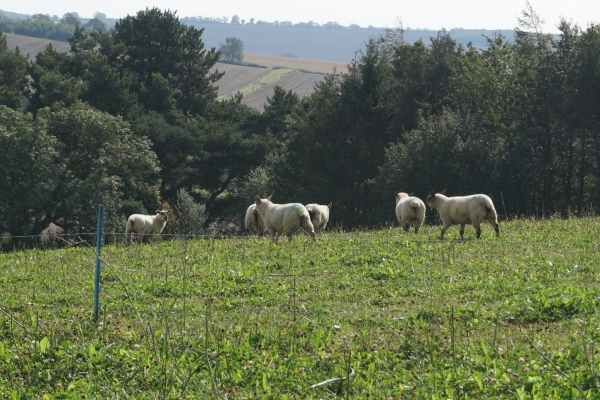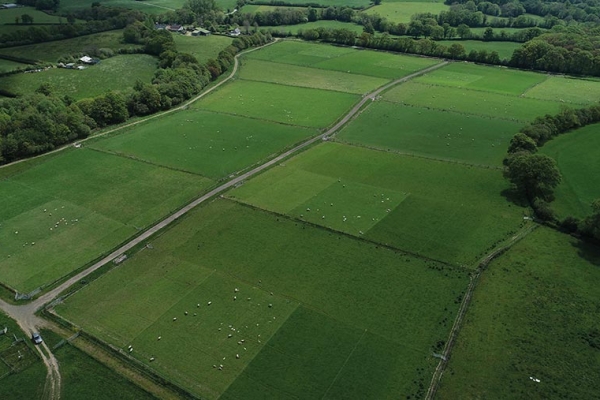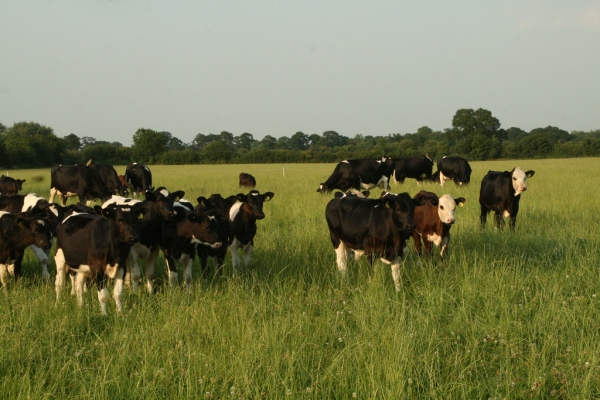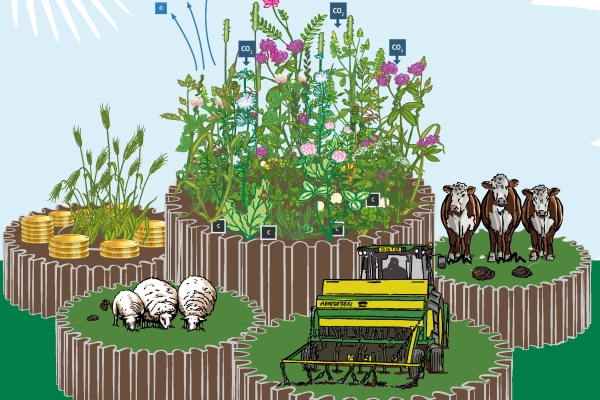Companion crops are a farmer’s friend
Companion cropping can sometimes be a difficult term to define, but a learned fellow farmer, Andy Howard, describes it as growing two or more crops together, and that’s a definition I like, because it means diversity within plant species (which I firmly believe in), encompassing complex herbal leys and cover crops. Diversity brings so many benefits, providing healthy soil which in turn leads to healthy food. This is something that many people care about, and about which I care passionately, for very personal reasons.
About 25 years ago, my wife and I had a stillborn daughter and suffered several miscarriages afterwards. We didn’t know which way to to turn – until we met Nim Barnes, who ran a charity called Foresight. “You are an agriculturalist,” she said, “have you thought about the minerals in your diet?” We hadn’t. “You analyse plant tissues,” said Nim, “so analyse yourselves!” We did, and we found that we were deficient in many minerals.
Maximising on minerals
Research by the old Ministry of Ag, Fisheries and Food showed falling levels of minerals in our milk, meat and vegetables over a 50 year period; a period that has coincided with increased intensification and a time when herbs, grasses and deep rooting legumes have been ignored.
How might we get those lost minerals back into our food? They are available in the soil, but a lot of plants don’t extract them. However, deep rooting grassland plants effectively mine them. Grazing animals will then eat them and transfer them to the surface of the soil as manure, making them available to our arable crops, and ultimately to us. It’s such a simple solution.
And it all comes about by creating diversity in the field, and that’s what I’m doing on my own farm.

(Summer quick fix – containing annual legumes and brassicas as 10 week soil-improving crop)
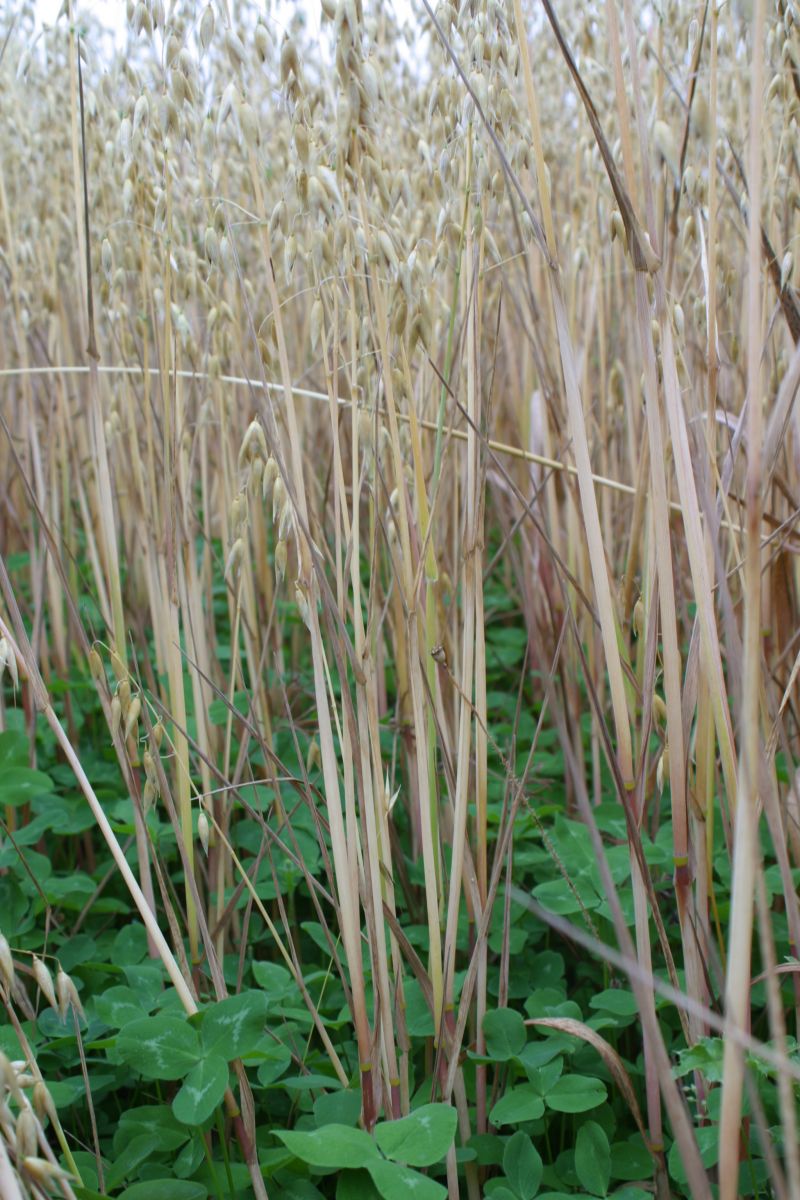
Diversity, diversity, diversity
Back in 2013, I purchased a small 107 acre farm in the Cotswolds; Honeydale, which is mostly Cotswold brash. For the first 12 months we didn’t change anything, but carried on with what had been done on that farm for many years. This was purely to grow spring barley, leaving the soil bare in winter. In fact the spring barley was only grown for 12 weeks of the year, which seemed a bit of a waste to me. It was an interesting experience. We had to use contractors so the costs were high, and though we grew a good crop with a malting premium, we lost money. So we made some changes, and the most important of these was to use deep rooting leys in rotation, to build soil quality. The farm now looks like a patchwork quilt and I really like that, because it symbolises diversity. We’re using nurse crops and intercrops, undersown clover to wheat, and rye and vetches as winter green manure.
Our two rules are to always keep the ground covered green and always mix species wherever possible. We are also using mob grazing with sheep to increase productivity on a small area and dramatically increase soil fertility. It’s also providing an opportunity for a local farmer’s son to expand his sheep enterprise, which I think is really important. We need to attract and encourage new entrants into farming.
(Pictured left: Clover undersown to spring cereal)
Happy animals
The ultimate companion crop is a diverse herbal ley and it works wonderfully well with mob grazing, since animals love to eat it. It’s much more palatable, so voluntary intakes are higher. The protein content is higher too, with greater liveweight gain, more milk etc. The best liveweight gain of all is on sainfoin, which we are growing at Honeydale. Research has shown a growth rate of 450 grammes a day fattening lambs on this superfood for livestock.

(Ewes and lambs grazing deep rooting 4 year herbal ley)
There’s lots of other good news with herb rich leys and legumes. We have forgotten the reasons we originally used them, but modern science, such as the recent EU funded LegumePlus project, is proving their value in terms of lower methane and anthelmintic properties.
Happy farmers
Another plus is drought resistance. I’ve been involved in farming for 30 years and once every 3-4 years we usually see a drought. Shallow rooted plants like ryegrass stop growing when there’s little water, but the deep rooted plants in a herbal ley can reach down to the water table and keep growing. Seasonal growth is good news too, since we don’t want all the forage at one time for grazing swards and the early growth of grasses and later growth of legumes means that we can keep animals out all year.
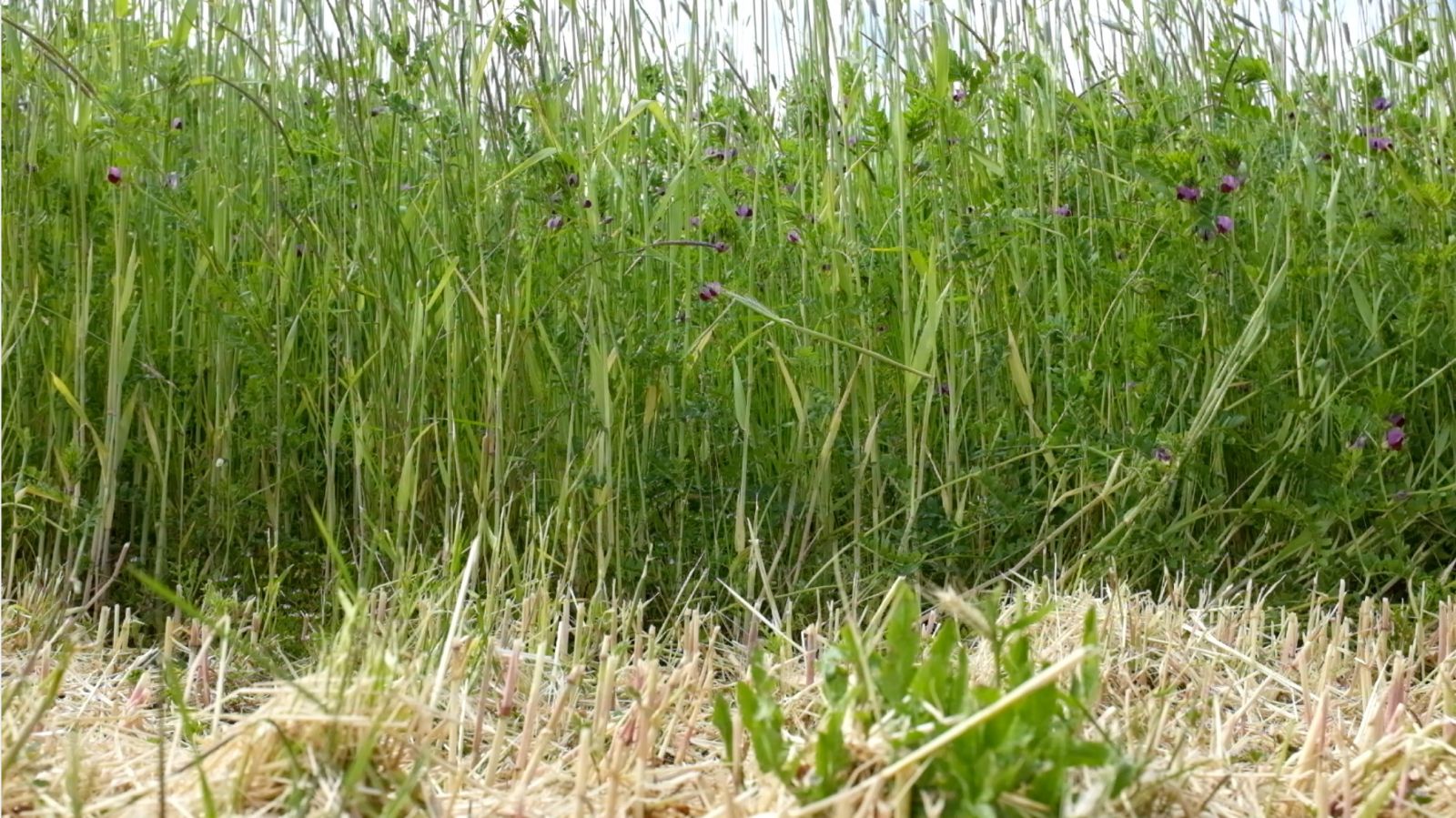
(Rye and vetch winter cover crop)
Cropping and crapping!
We’ve taken soil for granted, not invested enough in it. Decades ago, a local farming hero of mine, George Henderson, spoke of the importance of leaving his soil in better heart than he found it. And this is exactly what I want to do. There’s no one plan that fits all, but increased diversity, companion crops and intercrops will certainly help by adding organic matter. The icing on the cake is to integrate livestock. Not so much companion cropping as companions crapping, as I like to refer to it! It’s the manuring effect that really makes farming work. It has always been the case and I suspect it always will be. We might look for alternatives but many of us come back to this basic premise.
Editor’s note:
You can find various resources on Agricology that provide insights into the growing and benefits of companion cropping and diverse swards. Here are some:
- The potential for companion cropping and intercropping on UK arable farms
- Herbal Leys
- Forage Legumes: Difficult for Farmers to resist?
- Field Beans and Lupins
- Farming Oilseed Rape without Neonicotinoids
- Sainfoin with Dr Lydia Smith at NIAB
- Use of diverse swards and ‘mob grazing’ for forage production
Header image: Buckwheat companion nurse crop sheltering summer-sown ley seed mix. All photo credits: Ian Wilkinson.
